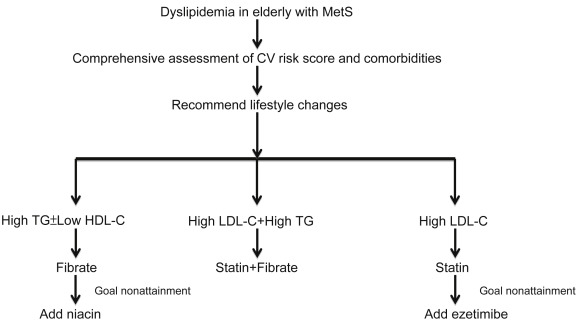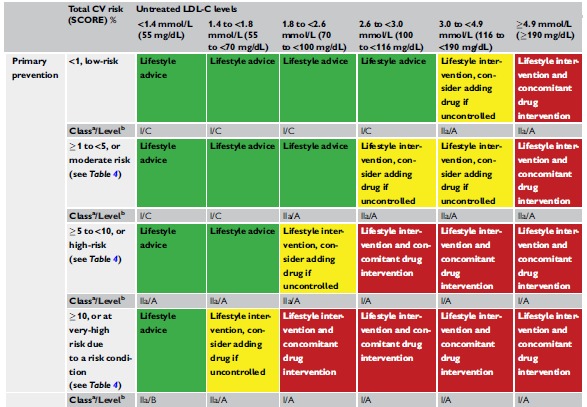
There are many different types of dyslipidemia. A high-cholesterol diet can lead to dyslipidemia. A low-cholesterol diet is associated with higher risk of cardiovascular disease, while high-cholesterol diets may result in an increased risk of hepatosplenomegaly. Both high and low levels of triglycerides can lead to many different health complications, including diabetes and pancreatitis. Luckily, there are treatments available for dyslipidemia.
Symptoms of dyslipidemia include atherosclerosis, which is a condition in which plaque builds up in arteries and narrows them. People with dyslipidemia are at greater risk of heart attack and stroke. In fact, it is believed that patients with dyslipidemia have a two- to three-fold increase in risk of heart disease. In fact, heart disease is one of the leading causes of death in the United States.
Treatments for dyslipidemia generally revolve around changes in diet. Generally, dietary improvements should be the primary focus. In general, a person should limit their saturated fat intake to seven percent or less of total calories, and they should aim to limit their cholesterol intake to less than 200 milligrams per day. Sodium should also be restricted to less than 2,400 milligrams a day. For some people, weight loss can be a good thing, but it is not necessary for everyone to reduce their sodium intake.
Exercise is important for dyslipidemia sufferers. It can help prevent cardiovascular disease, which is one of the leading causes of death in the United States. A doctor can help individuals with dyslipidemia exercise to help their condition. Increasing one’s physical activity levels can have major effects on heart disease. As with any disease, it is best to exercise gradually. The recommended daily amount of physical activity is 30-60 minutes of moderate exercise. Walking, swimming, biking, and lifting weights are good choices. Some people may even benefit from a personal trainer.
Children with dyslipidemia often experience symptoms of heart disease, stroke, and chest pain. Symptoms of dyslipidemia include difficulty breathing, numbness, and tingling in the arms. A physician can recommend treatment based on the severity of the condition. Although there is no cure for dyslipidemia, it can be treated with appropriate lifestyle changes and medications. When properly managed, a person can reduce their risk of cardiovascular disease by following a healthy diet and limiting the amount of bad cholesterol in their body.
A doctor may prescribe statins or fibrates to treat dyslipidemia. A healthy diet is essential for patients with this disease, but a balanced diet is essential for those who have a family history of high cholesterol. A doctor will prescribe statins if it’s necessary. If the patient’s condition is severe, it should be treated with medication and exercise to reduce the risk of a heart attack or stroke.

A diet high in cholesterol can be one of the first symptoms of dyslipidemia. This can lead to atherosclerosis, a condition in which plaque forms in the arteries. These plaques can cause heart attacks and strokes. These two diseases double the risk of cardiovascular disease. As a result, it is important to learn about the causes of dyslipidemia and follow a healthy diet. If you’ve been diagnosed with this condition, it’s important to get regular medical attention to prevent further complications from developing.
A high cholesterol diet is one of the best ways to prevent dyslipidemia. A diet high in cholesterol is good for overall health and helps reduce the risk of cardiovascular disease. A diet low in cholesterol can also cause heart disease. This can lead to an increase in heart attacks and strokes. Therefore, it is important to have a healthy diet. This will help prevent and control atherosclerosis.
A diet high in cholesterol can cause dyslipidemia in children. Unhealthy diet is one of the main reasons. Another factor is a sedentary lifestyle. Some people are genetically predisposed to the disease. If you have a family history of dyslipidemia, you can take steps to treat the disease with natural remedies. Site https://healthremediesshop.com/
recommends regular exercise and a healthy diet to help reduce stress levels and prevent disease.
There are many causes for dyslipidemia. Some of them are genetic, but there are also non-hereditary forms of the disease. The non-familial form of DH is a rare but serious condition. Although hyperlipidemia affects most people, it is important to note that the disease has two main forms: primary and secondary. However, the most common type of dyslipidemia is the primary type. Although there are no specific genetic causes for this type of disorder, there are a number of lifestyle factors that can lead to this disorder.